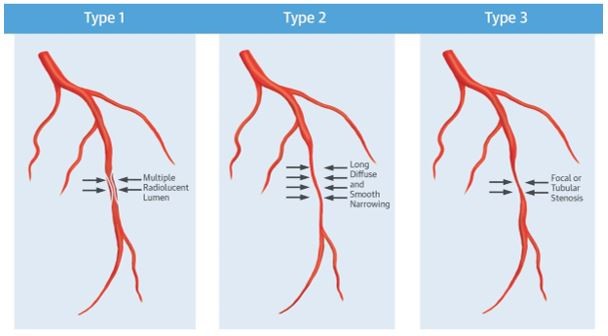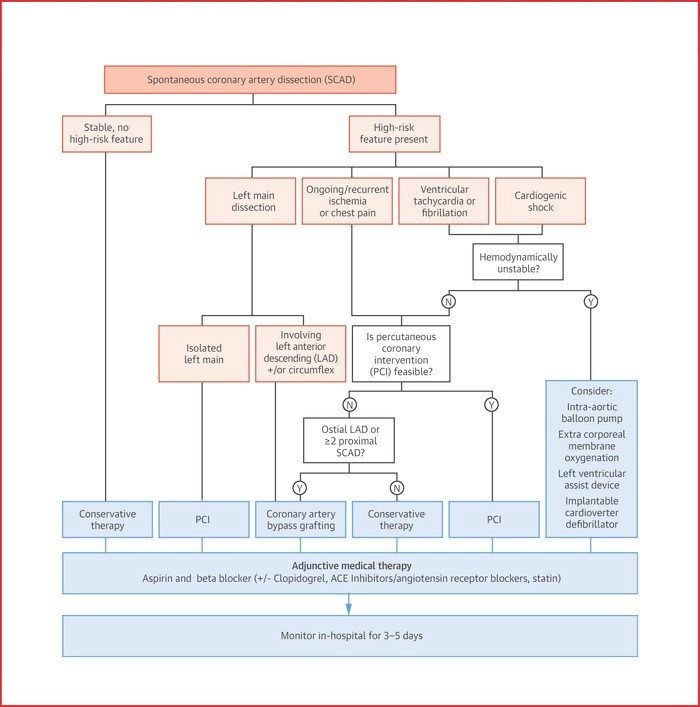
急性冠脉综合征
Expert OpinionJan 31, 2019
JOURNAL:Am J Cardiol. Article Link
Calvin Ka Wing Tong, MD; Dr. Jacqueline W. L. Saw, MD, FACC Keywords: Acute Coronary Syndromes; Arrhythmias and Clinical EP; Cardiac Surgery; Congenital Heart Disease and Pediatric Cardiology; Diabetes and Cardiometabolic Disease; Dyslipidemia; Heart Failure and Cardiomyopathies; Invasive Cardiovascular Angiography and Intervention; Noninvasive Imaging; Pericardial Disease; Prevention; Atherosclerotic Disease (CAD/PAD); ACS and Cardiac Biomarkers; SCD/Ventricular Arrhythmias; Atrial Fibrillation/Supraventricular Arrhythmias; Aortic Surgery; Cardiac Surgery and Arrhythmias; Cardiac Surgery and CHD and Pediatrics; Cardiac Surgery and Heart Failure; Congenital Heart Disease; CHD and Pediatrics and Arrhythmias; CHD and Pediatrics and Imaging; CHD and Pediatrics and Interventions; CHD and Pediatrics and Prevention; CHD and Pediatrics and Quality Improvement; Nonstatins; Novel Agents; Statins; Acute Heart Failure; Heart Failure and Cardiac Biomarkers; Interventions and ACS; Interventions and Coronary Artery Disease; Interventions and Imaging; Interventions and
Spontaneous coronary artery dissection (SCAD) is an increasingly recognized cause of myocardial infarction (MI), particularly affecting young women. It is defined as a non-traumatic, non-iatrogenic, and non-atherosclerotic separation of the coronary arterial wall by intramural hematoma, resulting in a false lumen with or without intimal tear. Intramural hematoma can accumulate between any arterial layer (intima, media, or adventitia) and cause compression of the arterial lumen. In turn, this can compromise antegrade coronary perfusion and result in myocardial ischemia or infarction.1
SCAD was first reported in 1931.2 Since then, there have been <1300 reported SCAD cases; most were published in the past 5 years. The Canadian SCAD Study (CanSCAD) was conducted to improve our understanding of the natural history of this relatively infrequent condition.3 This is a multicenter, prospective, observational study that enrolled 750 SCAD patients from 22 North American centers from 2014 to 2018. All coronary angiograms were adjudicated in a core laboratory. We aimed to incorporate insights learned from this study for this review.
EPIDEMIOLOGY
SCAD was previously thought to be rare and frequently associated with pregnancy. However, under-diagnosis of SCAD and under-recognition of its angiographic variants made the prevalence difficult to estimate. SCAD primarily affects young to middle-aged women. In recent studies, women accounted for >90% of patients with SCAD.4-8 SCAD was the underlying cause in 22-43% of MI in women <50 years.9,10 In CanSCAD, the mean age of SCAD patients was 51.8 ± 10.2; 88.5% were women (55% post-menopausal), and 87.7% were Caucasian. About a third of patients had hypertension, and a third had no cardiac risk factors. Other relevant clinical history includes migraines (33%), anxiety (20%), and depression (20%).3
HOSPITAL PRESENTATION
The majority of patients with SCAD presents with MI. In CanSCAD, 69.9% had non-ST-segment elevation MI, and 29.7% had ST-segment elevation MI; the most common presenting symptom was chest discomfort (91.5%). A small proportion (8.1%) presented with more dramatic and life-threatening ventricular tachycardia or fibrillation.3 Less frequently, patients may present with cardiogenic shock (<3%) or sudden cardiac death (<1% based on pathology series).5,11,12 Left ventricular function is usually preserved on presentation,5,11,13 but >80% had wall motion abnormalities that can be very helpful to aid angiographic recognition of SCAD.3
PRECIPITATING AND PREDISPOSING FACTORS
Conditions that increase intracoronary shear stress, such as increase in thoracoabdominal pressure or catecholamines, may precipitate SCAD. The most common precipitating factor in the CanSCAD cohort was emotional stress, reported in 50.3% of patients (rated as high to severe stress). Another important stressor is intense physical stress, reported in 29%, with isometric activities lifting >50 lb in 10%.3 These have management implications because changes in lifestyle or psychological well-being may impact SCAD recurrence.
In terms of predisposing arteriopathy, fibromuscular dysplasia (FMD) is most commonly observed in patients with SCAD (co-prevalence reported from 52 to 86%). Non-coronary FMD can be diagnosed on catheter-based angiography of renal and iliac arteries during coronary angiographies or with computed tomography angiography.4,5,14 In CanSCAD, only 31% of patients had concomitant non-coronary FMD; however, this was underestimated because 45% of patients did not yet undergo any FMD screening or had incomplete screening. Non-coronary FMD can affect the renal, iliac, and cerebrovascular arteries. Other causes of SCAD were much less frequent, including peripartum SCAD in <5% of cases, connective tissue disorders in <5%, and systemic inflammatory diseases in <5%.3
DIAGNOSIS
Coronary angiography continues to be the cornerstone for diagnosing SCAD. Although dedicated intracoronary imaging with optical coherence tomography or intravascular ultrasound improves the diagnostic yield of SCAD, there can be additional risks, including propagation of dissection and iatrogenic guide-catheter dissection. In CanSCAD, optical coherence tomography or intravascular ultrasound was performed in only a small proportion (7.6%) of SCAD patients. This highlights the importance of being familiar with angiographic variants of SCAD to aid diagnosis.3
Figure 1: Angiographic Subtypes of SCAD

Reproduced with permission from Saw et al.1
A new SCAD angiographic classification was devised to facilitate SCAD diagnosis and stratified the angiographic appearance into 3 types (Figure 1).15 Type 1 describes the pathognomonic presence of contrast within arterial wall delineating multiple radiolucent lumens. Type 2 describes diffuse and smooth stenosis of usually >20 mm length with varying severity. Type 3 describes focal or tubular stenosis, which mimics atherosclerosis and requires intracoronary imaging to confirm the presence of intramural hematoma. In CanSCAD, the most common angiographic appearance was Type 2 (60.2%), followed by Type 1 (29%) and Type 3 (10.8%).3
SCAD CORONARY INVOLVEMENT
SCAD can affect any coronary artery, and the most commonly affected is the left anterior descending artery (LAD) (52.1%) in the CanSCAD study. The proximal segments including the left main or the proximal segment of LAD, circumflex, and right coronary artery, occurred in only 7.6% of cases. In the majority of cases, SCAD occurred in 1 coronary segment only (74.8%). In 13.1% of cases, multiple non-contiguous arteries were affected. The mean length of dissection was 33.2 mm, and the median stenosis severity was 79.0%. The majority of cases (63.8%) had Thrombolysis in Myocardial Infarction grade 3 flow.3
MANAGEMENT OF SCAD
There is no randomized trial comparing management strategies for SCAD. Therefore, much of the management recommendations were derived from observational studies and expert opinions. A suggested management algorithm is depicted in Figure 2. Conservative therapy is the preferred treatment strategy unless patients have high-risk features (e.g., left main dissection, ongoing ischemia, and hemodynamic/electrical instability). In the CanSCAD study, the majority of SCAD patients was managed conservatively (86.4%). Only 11.9% underwent percutaneous coronary intervention (PCI), 1.5% received fibrinolysis, and 0.3% underwent coronary artery bypass surgery.3 Of those treated conservatively, only 2.0% subsequently required PCI, and 0.3% subsequently required coronary artery bypass surgery. Patients treated conservatively should be monitored in-hospital for 3-5 days depending on symptoms and location of SCAD.16
For those who underwent revascularization as initial therapy, the main reasons for revascularization were ongoing ischemic symptoms (39.1%), ongoing ischemic changes on electrocardiogram (34.5%), and severe luminal stenosis (31.8%). The technical success rates with PCI remained relatively poor (30.1% unsuccessful; 40.8% partially successful). Given the underlying frailty and disrupted integrity of arterial wall, PCI can result in iatrogenic dissection and/or extension of dissection. In fact, 32% of patients who underwent PCI had propagation of SCAD during PCI. PCI improved Thrombolysis in Myocardial Infarction flow in 57.6% of patients but made no difference in 38.8% of patients.3
Figure 2: Suggested Management Algorithm for SCAD

Reproduced with permission from Saw et al.1
POST-DISCHARGE RECOMMENDATIONS
Given that lifestyle and psychological stressors could affect SCAD recurrence, cardiac rehabilitation including exercise program, psychosocial counselling, and peer support can be beneficial.17 Patients are advised to avoid heavy weightlifting (threshold for women is 30 lbs and men is 50 lbs) and to have lower target heart rate (50-70% heart rate reserve) and systolic blood pressure of <130 mmHg with exercise during rehabilitation after SCAD event.
Patients with SCAD at our institution are administered aspirin and beta-blocker long-term routinely and short-term P2Y12 inhibitor. Angiotensin-converting enzyme (ACE) inhibitor or angiotensin receptor blocker (ARB) is administered if there is left ventricular dysfunction. Statin is administered if there is underlying dyslipidemia. In the CanSCAD study, patients were frequently discharged on aspirin (93.7%), P2Y12 inhibitor (67.4%), beta-blocker (84.8), ACE inhibitor or ARB (57.4%), and statin (55.1%). At the last clinical follow-up, the majority of patients remained on aspirin (89.2%), beta-blocker (79%), ACE inhibitor or ARB (48.2%), and statin (40.1%). However, only 35.8% remained on a P2Y12 inhibitor.3
PROGNOSIS
Both the in-hospital and 30-day outcomes were not benign in the CanSCAD study, although survival was excellent (in-hospital mortality was 0.1%; there was no subsequent 30-day mortality). Overall in-hospital major adverse events occurred in 8.8% of patients, which comprised recurrent MI (4%), severe ventricular arrhythmia (3.9%), cardiogenic shock (2%), and unplanned revascularization (2.5%). Only a small proportion had stroke/transient ischemic attack (0.8%) and congestive heart failure (0.3%). One patient (0.1%) died in hospital. The median duration of hospital stay was 4 days. Total 30-day major adverse cardiovascular events (MACE) were reported in 8.8% of patients, including recurrent MI (6.1%), unplanned revascularization (2.7%), and stroke/transient ischemic attack (1.2%). Congestive heart failure developed in 3 patients (0.4%), and 1 patient died (0.1%). Other complications within 30 days included cardiac emergency room visit (4.9%), admission for chest pain (2.5%), pericarditis (1.9%), and new-onset atrial fibrillation (0.9%). Peripartum SCAD (i.e., during third trimester to 12 months postpartum) was found to be an independent predictor of in-hospital major adverse events (odds ratio 2.9) and 30-day MACE (odds ratio 2.8). Connective tissue disorder was also an independent predictor of 30-day MACE (odds ratio 8.7).3
CONCLUSION
SCAD is increasingly recognized as an important cause of MI that predominantly affects young to middle-aged women. Much knowledge was gained from the CanSCAD study, which is currently the largest, prospective, observational SCAD study. SCAD is often associated with FMD, psychological stressors, and isometric exertion. Coronary angiogram remains the gold-standard for SCAD diagnosis, with Type 2 SCAD being the predominant angiographic appearance. Conservative therapy appeared to be safe and is the preferred treatment strategy unless patients have high-risk features. Overall survival is excellent after a SCAD event. However, cardiovascular morbidity including recurrent MI, unplanned revascularization, and stroke/transient ischemic attack may occur within 30 days of SCAD diagnosis. Peripartum SCAD and concomitant connective tissue disorder appear to be independent predictors of 30-day MACE. Further studies are required to better understand this condition, including evaluating the long-term event rates with SCAD and risk stratification and best strategy for management.
REFERENCES